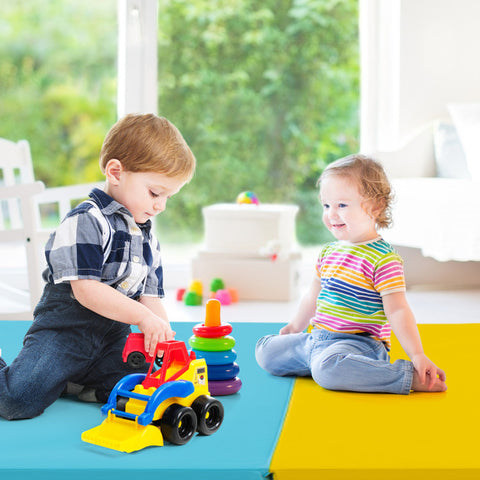News
Choosing the Right Size Gymnastics Mat: A Guide for Home and Studio Use
When it comes to gymnastics mats, material and thickness often get most of the attention—but selecting the right gymnastics mat size is just as important. Whether you're outfitting a home gym or a professional studio, the size of your mat directly impacts safety, performance, and how well it fits your space. In the first 100 words, it’s essential to understand that gymnastics mat size affects everything from movement range to injury prevention, especially for young gymnasts, cheerleaders, and tumblers.

Understanding Standard Gymnastics Mat Sizes
Gymnastics mats come in various standard dimensions, such as:
-
4’ x 8’ foldable mats (commonly used for home practice)
-
5’ x 10’ panel mats (ideal for tumbling and stretching routines)
-
8’ x 16’ competition-grade mats (used in training centers and events)
Each has its own use case, and the wrong size can limit practice opportunities or lead to inefficient coverage, especially in confined or uneven spaces.
How to Choose the Right Size for Your Space
1. Measure Your Practice Area
Start by measuring the available space in your room, garage, or gym. Leave at least 2–3 feet of clearance around the mat for safety and movement.
2. Consider the Type of Activity
-
For basic tumbling and stretching, a 4’ x 8’ mat may be sufficient.
-
For acrobatics or partner stunts, larger mats like 5’ x 10’ offer more space.
-
For aerial or cheer practice, extended-length mats or connecting panels are often required.
3. Portability vs. Coverage
If you need to move or store the mat frequently, smaller foldable mats are ideal. For permanent setups, consider interlocking or roll-out mats for full floor coverage.
Home Use vs. Studio Use: What’s Different?
-
Home Use Tips:
-
Opt for mats that can fold or roll for storage.
-
Choose medium sizes like 4’ x 6’ or 4’ x 8’ for versatility.
-
Make sure the mat fits doorways if you plan to move it between rooms.
-
-
Studio or Gym Tips:
-
Go for full-size professional mats or interlocking systems.
-
Ensure consistent thickness across large surfaces.
-
Use additional crash pads in high-impact zones.
-
Safety Considerations Based on Size
Using a mat that’s too small can result in:
-
Limited movement, restricting skill development
-
Unsafe landings due to edge exposure
-
Overreliance on hard flooring for balance or rebound
Larger mats provide:
-
Better surface area for rolling, tumbling, or falling safely
-
Freedom to train multiple moves in sequence
-
Confidence in practice due to added protection
Adjustable Options for Growing Needs
Some brands offer modular mat systems that connect using Velcro or zipper seams. This is especially helpful as a gymnast progresses or as multiple users share the same space.
Conclusion: Size Affects Performance, Safety, and Versatility
In the last 100 words, remember that choosing the right gymnastics mat size can make a big difference in how safely and effectively you or your athlete trains. Always consider your space, activity level, and storage capacity before selecting a mat. Whether you're shopping for a child’s first practice mat or equipping a full gymnastics studio, proper sizing ensures the mat delivers optimal performance and protects against injury.

